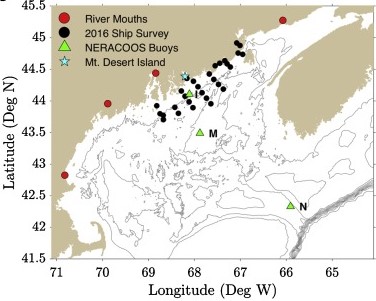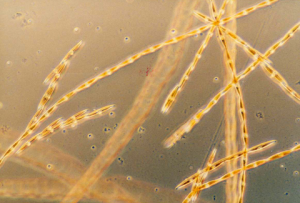In the Gulf of Maine (GOM), the presence of the toxic diatom genus Pseudo-nitzschia (PN) is growing. Unprecedented levels of domoic acid in 2016 led to the first Amnesic Shellfish Poisoning shellfish harvesting closures in the GOM region. New research findings, supported in part by NCCOS, explore the biogeography of PN and the environmental controls on the species in the GOM from 2012–2016. Special attention is given to the possible causes of the 2016 bloom.

Domoic acid (DA) first came to international attention in 1987, when hundreds of people were poisoned and three people died after eating contaminated shellfish harvested on Prince Edward Island, Canada. The diatom PN was identified as the cause. Although PN in the GOM has not been extensively studied, their growing presence and the 2016 DA event have increased interest in understanding the dynamics of the genus in this region. DA poses a threat both to the economy and to human health.
Highlights of the research findings include: PN species composition in the GOM were consistent with normal biogeography trends in 2012, 2013, 2014, and 2015. In 2016 there was an anomalous PN bloom and never-before-seen DA concentrations for the GOM. Factors driving GOM PN dynamics, DA concentrations, and the 2016 event are unclear. The origin of PN cells to the GOM may be either remote or local and more research is necessary.

The research findings were supported under separate NCCOS ECOHAB projects initiated in 2006 and 2009 and Event Response funding. The research was conducted by investigators at the Woods Hole Oceanographic Institution, University of Maine, and the Florida Fish and Wildlife Conservation Commission – Fish and Wildlife Research Institute.
Citation: Clark, Suzanna, Katherine A. Hubbard, Donald M. Anderson, Dennis J. McGillicuddy, David K. Ralston, and David W. Townsend. 2019. Pseudo-nitzschia bloom dynamics in the Gulf of Maine: 2012–2016. Harmful Algae 38, 101656. https://doi.org/10.1016/j.hal.2019.101656.
